May 29, 2025 | 10:29 GMT +7
May 29, 2025 | 10:29 GMT +7
Hotline: 0913.378.918
May 29, 2025 | 10:29 GMT +7
Hotline: 0913.378.918
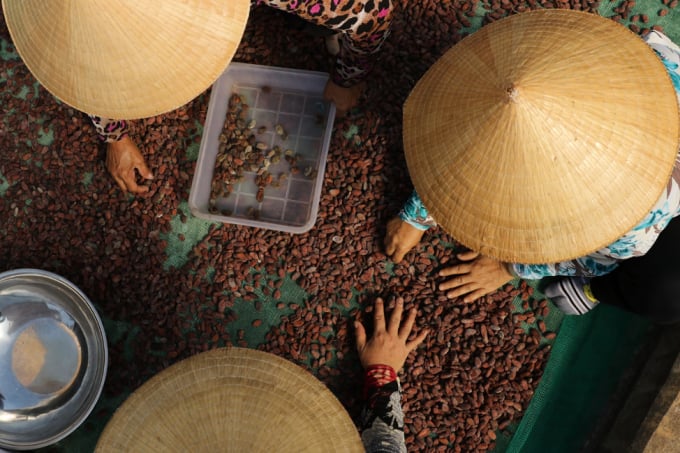
Vietnam is producing a top-quality Cacao. Photo: Elodie Lenhardt.
A fact little known to most Vietnamese is that Vietnam is producing a top-quality cacao and a significant part of the cacao is used locally in a full vertical integration to manufacture chocolate or cacao mass. These high added-value products are in turn exported to highly demanding markets such as Japan or Belgium.
Vietnam grew interest for cocoa in early 2000, when it was re-introduced to Vietnam farmers with a cocoa program led by Nong Lam University, together with the World Cocoa Foundation. Thanks to the favorable conditions of soil, climate, together with the experience in developing industrial crops and the global increasing demand for fine flavor cocoa, cocoa was considered a strategic industrial crop alongside coffee, rubber, pepper, and cashew nuts during the period 2000-2015. Starting in 2009, Puratos Grand-Place tested and prototyped a disruptive Cocoa Sourcing Sustainable Strategy named Cacao-Trace in Vietnam which has since been upscaled across the globe.
Over the years, Vietnam is also becoming a place for small “bean to bar” enterprises that are creating a diversity of chocolate for the local consumers. There is an opportunity for Vietnam to become a medium size player in the Cacao World, but this requires a collaborative effort from all stakeholders.
Cacao is a highly demanding crop and Vietnamese farming practices are among the best with regards to taking care of this subtle fruit. There are over 6 million cacao farmers in the world today and 90% of cacao is produced by small holder farmers. The post-harvest practices of fermentation and drying often take place at individual farm level. Not only does the dispersed supply chain face issues of quality and transparency, but it also fails to pay attention to flavor.
The Cacao-Trace chocolate enables to unlock the full potential of the Vietnamese cacao. In teh same way as terroir will drive unique wine flavors, Vietnamese terroir fosters a cacao that is intense and uniquely fruity. It has been internationally recognized receiving both the cocoa of excellence award and Fine Flavor recognition in 2015.

A significant part of the cacao is used locally in a full vertical integration to manufacture chocolate or cacao mass. Photo: The Cocoa Project.
Unfortunately, while the potential for great diversification of the global agriculture production of Vietnam exist with cacao, in a full vertical integration model that is creating high added value products such as chocolate in the country, the production of Cacao is endangered as farmers are inclined to develop other “fashionable” crops such as Durian, Pomelo, pepper, some of which are produced with significant harms to the environment.
The future of Vietnam cocoa lies in three key elements: Fruit, Farmer, and Forest. For Vietnam to reverse this trend there needs to be support from the private and public sector, to trigger more knowledge sharing at all levels, national and local. Access to technical advice, good planting material and solutions for managing pest and disease. Today with the climates unpredictable patterns now more than ever we need resilient models for farming.
It has been observed that farmers often became fully reliant on chemical inputs. Not only is this costly but it also destabilizes the balance of the ecosystem services. The rapid disappearance of pollinators is a vivid example of this. With cacao-based agroforestry models, we can restore and stabilize ecosystem services, such as increasing populations of microbial organisms in the soil, which leads to faster nitrification of Nitrogen as well as mirids, which are extremely important in the development stage of cacao pods.
Examples of agroforestry models include intercropping Cacao with other crops such as fruit trees, timber trees, cashews and even vanilla for a high added value crop. Along with circular economy and regenerative practices.
Regenerative agroforestry models can mimic nature’s strengths with natural defense systems creating a conducive environment for cacao to thrive. It also reduces dependency on chemical inputs building healthy soil, the foundation for all. Such an approach can also be valued in a way which not only measures carbon capture but also the reduction from using fewer chemical inputs in the farm.
A large part of the global emissions come from agriculture production. It is possible to turn cacao production from an emitting source towards a carbon sink.
The carbon sequestration of the trees planted, preserved forests and enhanced soil health can be monetized through carbon certification on the voluntary carbon market and then sold to the carbon market. The future revenue from carbon credits, is an excellent way that can be used to finance the right grower conditions for cacao support reforestation, afforestation and agroforestry programs within the verified sourcing areas and place a monetary value on vital resources, trees.
This presents a unique opportunity for Vietnam to be known not just for fine or flavor cocoa, but also for sustainable cocoa production both in the international and local community.
The chocolate market in Vietnam is still young. Nowadays one can find imported brands of chocolate confectioneries, perceived as a luxury, and some popular products made of compound* (cocoa based product composed of cocoa powder and vegetable fats, a lower cost alternative to chocolate). However, chocolate has yet to make its way to the local’s daily habits, in the way that it has in Western countries. The recipe of the product that will make Vietnamese people think of chocolate as something that is part of their daily life has not yet been found.
But things are changing and the next few years will be very exciting for the industry. Many new brands are flourishing, nurtured by passionate people.
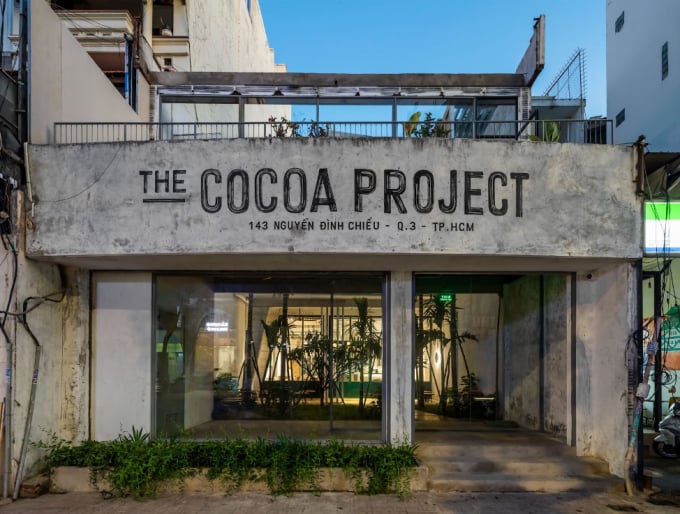
The Cocoa Project. Photo: Hiroyuki Oki.
The Cocoa Project is a great example of this mission to create a culture of chocolate in Vietnam. In the same way that there is a shared culture of enjoying coffee, or beer in Vietnam – The Cocoa Project wants to bring chocolate into the everyday moments of the locals, starting with its flagship store in District 3, Ho Chi Minh City. The brand is also set on raising collective awareness about the importance of choosing not only a good chocolate, but a chocolate for good : respectful of the farmers and for everyone involved in the value chain (hence its tagline “Chocolate for the People”).

The Cocoa Project wants to bring chocolate into the everyday moments of the locals, starting with its flagship store in District 3, Ho Chi Minh City. Photo: Mervin Lee.
Besides its stance on sustainability, there is an interesting twist to observe in the brand’s approach to the local market. The Cocoa Project is creating chocolate products meant to appeal to the Vietnamese palate, products that will resonate with their memories. Locally sourced ingredients from Vietnam are prioritized. The main ingredient being of course Cacao-Trace chocolate, for the high quality of the chocolate which pays both attention to the fermentation process, and also for guarantees that a premium is paid to the local farmers.
Given the specific characteristics of Vietnamese cocoa (fine flavor, fairer value chain), Vietnam has an opportunity to rise as a new cocoa country that could shake up the status quo of the industry, one that deserves to receive support from all stakeholders. It will need a mix of farmer service models which bring values throughout the supply chain, from the farm to the consumer. It is a journey, one which with the right mindset can be achieved together.
Managing Director of Puratos Grand-Place Vietnam

(VAN) Ms. Nguyen Thi Dung, Deputy Director of Ngoc Hoang Cooperative, shared about the journey of bringing dragon fruit to Europe, achieving annual revenues in the billions of VND.
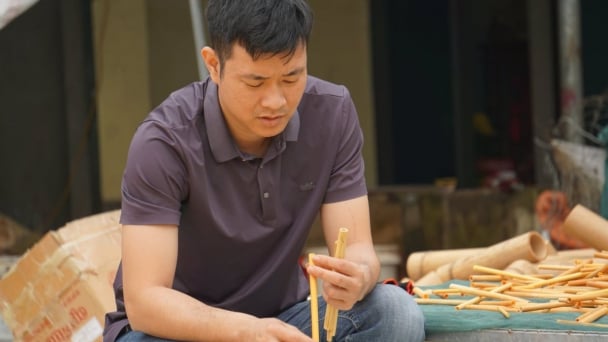
(VAN) Bamboo products from Thang Tho Bamboo Cooperative have reached many countries around the world, while also creating jobs for local workers.
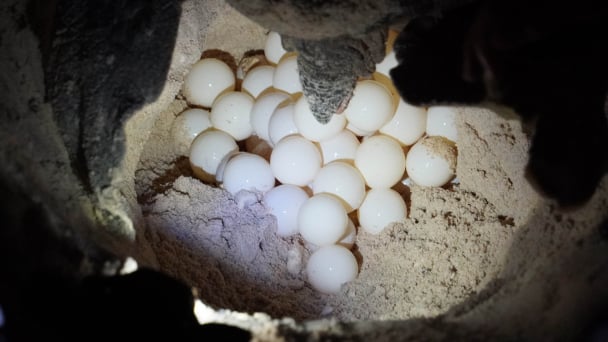
(VAN) The Management Board of Con Dao National Park reported that a green sea turtle, tagged in the Philippines, has traveled thousands of kilometers to lay 84 eggs on Bay Canh Islet.
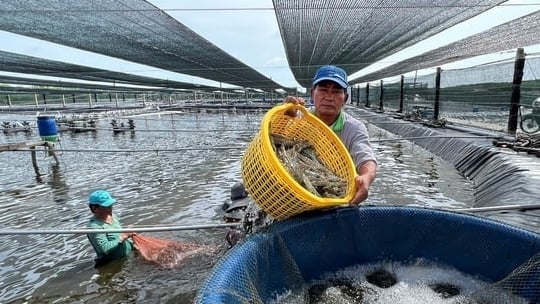
(VAN) Green technology is paving a new path for sustainable aquaculture in the Mekong Delta in particular and across the country in general, helping reduce emissions and adapt to climate change.
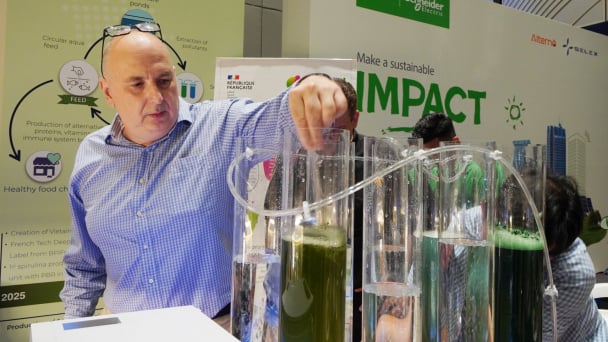
(VAN) On May 27, La French Tech Vietnam (the French startup and innovation community in Vietnam) held the French Tech Summit Vietnam 2025.
/2025/05/27/4731-2-223159_980.jpg)
(VAN) No votive paper, no styrofoam, no plastic bags, no plastic bottles, and no single-use plastic trays are the key rules tourists should keep in mind when visiting Con Dao.
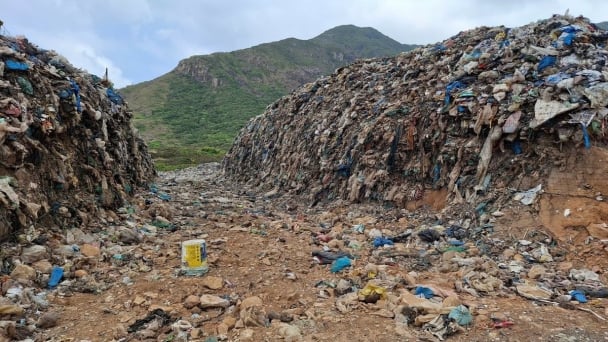
(VAN) In the fight against plastic pollution, Vietnam has been demonstrating a proactive, pioneering, and active role in addressing the greatest environmental challenge today.